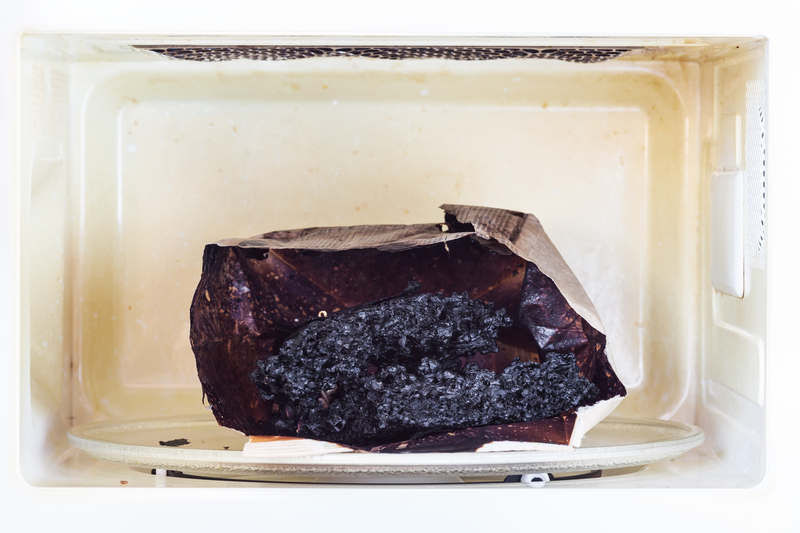Reliable Methods for Tackling Persistent Damp Smell
Posted on 21/09/2025
Reliable Methods for Tackling Persistent Damp Smell: Complete Guide
Is your home plagued by an unpleasant musty odor that just won't budge? The persistent damp smell isn't just a nuisance; it can also signal potential threats to your home's structure and your health. This comprehensive article reveals reliable methods for tackling persistent damp smell, diving into practical strategies, prevention tips, and expert advice to help you reclaim a fresh, odor-free environment.

What Causes Persistent Damp Smells?
Understanding the root cause is the first step to successfully eliminate musty odors. A damp odor typically originates from excess moisture that facilitates mold, mildew, and bacterial growth. Common culprits include:
- Leaking pipes or plumbing issues
- Inadequate ventilation in bathrooms, basements, or laundry rooms
- Poorly sealed windows and doors allowing water ingress
- Flooding, roof leaks, or rising damp
- Condensation on cold surfaces and walls
Not only are such odors unpleasant, but long-term exposure to mold and mildew can also affect indoor air quality, contributing to respiratory and allergic reactions. Knowing where and why the smelly dampness originates is crucial for effective elimination.
Signs of a Persistent Damp Smell
- Consistent musty odor in particular rooms or areas
- Visible mold or mildew on walls, ceilings, or fabrics
- Peeling paint or wallpaper
- Wet or discolored patches on floors, walls, or ceilings
- Condensation on windows
- High indoor humidity (generally above 60%)
Most Effective Methods for Eliminating Persistent Damp Odors
1. Identify and Fix the Source of Moisture
The most reliable method for tackling persistent damp smell is always to address the source of moisture. No matter how many air fresheners or odor removers you use, odors will return unless the underlying cause is fixed.
- Check for leaks: Inspect plumbing, roofs, gutters, and windows for signs of leaks. Repair any issues promptly.
- Improve drainage: Ensure that the ground around your home slopes away from the foundation. Clear gutters and downspouts of debris regularly.
- Seal cracks: Use waterproof sealants on walls, floors, and around windows to block water entry.
2. Boost Ventilation & Air Circulation
Stagnant air traps humidity, encouraging mold and mildew growth. Increasing ventilation is a leading remedy for persistent damp odor issues.
- Open windows and doors: Create cross-ventilation throughout your home, especially after rain or during humid days.
- Use exhaust fans: Run fans in bathrooms, kitchens, and laundry areas to quickly vent out moist air.
- Install air bricks or trickle vents: Basements and old homes may benefit from permanent airflow solutions.
- Move furniture: Avoid pressing large furniture pieces against external walls. This allows air to circulate and prevents condensation.
3. Utilize Dehumidifiers and Moisture Absorbers
For spaces with chronic humidity, dehumidifiers are an investment that pays off by keeping moisture--and odors--at bay.
- Electric dehumidifiers: These devices efficiently control relative humidity, especially in basements and laundry rooms.
- Desiccant moisture absorbers: Available as crystals, tubs, or sachets, these are ideal for closets, cupboards, and small spaces.
Maintain humidity below 60% to significantly reduce the risk of lingering damp smells.
4. Deep Clean Affected Areas
Reliable methods for tackling musty damp smells always incorporate a thorough cleaning regimen. Use the following steps to banish odors and sources of bacteria:
- Wash surfaces: Scrub walls, floors, and ceilings with a mixture of water and mild detergent or a specialized mildew remover.
- Treat mold and mildew: Apply solutions of white vinegar (1:1 with water), baking soda, or hydrogen peroxide to kill spores. (Always wear gloves and ventilate the area.)
- Launder fabrics: Wash curtains, bedding, and towels regularly with hot water to remove spores and trapped odors.
- Clean carpets and upholstery: Use a carpet cleaner or professional cleaning service to remove deep-seated mildew in fibers.
5. Dry Out the Space Thoroughly
After cleaning, ensure affected areas are completely dry. Dampness left behind is a surefire way for odors to return.
- Use fans and heaters to speed up drying in wet or humid weather.
- For severe flooding or leaks, consider hiring a professional drying and restoration service.
6. Natural Odor Neutralizers
While not a substitute for removing moisture, natural odor removers can help eliminate traces of damp mustiness from fabrics and air:
- Baking soda: Sprinkle on carpets, shoes, or upholstery and vacuum after several hours.
- Activated charcoal: Place bowls in musty rooms to absorb both odors and moisture.
- Vinegar: Leave open bowls of white vinegar in affected areas for up to 24 hours (the vinegar smell will dissipate).
7. Regular Maintenance and Preventative Measures
Regular upkeep is another key method for tackling persistent damp smell before it gets out of hand. Consider these maintenance tips:
- Insulate cold surfaces to prevent condensation.
- Regularly clean and maintain HVAC systems and filters.
- Inspect under sinks, around bathtubs, and behind appliances for early signs of leaks.
- Allow sunlight into rooms whenever possible, as UV rays inhibit mold growth.
- Rotate and air out stored textiles and clothing.
Specialized Solutions for Different Areas
1. Tackling Damp Smell in the Basement
- Install a sump pump and check for cracks in the foundation.
- Use waterproof paint or membranes on basement walls.
- Keep storage items on pallets or shelves rather than directly on the floor.
- Operate a large-capacity dehumidifier during wet seasons.
2. Banishing Musty Odor from Closets and Wardrobes
- Store clothes only when dry--avoid hanging damp laundry.
- Utilize silica gel packs or moisture-absorbing sachets.
- Leave the doors open occasionally to encourage airflow.
- Wipe walls and shelves regularly with a mild vinegar solution.
3. Removing Persistent Damp Smell from Carpets and Soft Furnishings
- Steam clean carpets and upholstery every 6-12 months--more often in humid areas.
- For spot odors, treat with baking soda before vacuuming.
- Avoid wall-to-wall carpeting in moisture-prone areas like basements and bathrooms.
4. Treating Damp Smells in Bathrooms and Kitchens
- Wipe down tiles, grout, and shower curtains to prevent mold.
- Use squeegees on shower walls and floors after use.
- Repair dripping taps and leaking appliances immediately.
- Run an extractor fan during and after use.
When to Seek Professional Help
Sometimes, persistent moldy odors persist despite your best DIY efforts. When should you consult a professional?
- Mold is widespread or covers more than one square meter.
- You're experiencing health symptoms like coughing, headaches, or allergies.
- Odor returns quickly after cleaning and drying.
- There's hidden damage to structural components (floors, walls, ceilings).
- The source of moisture cannot be found or repaired easily.
Certified mold remediation experts use advanced tools such as moisture meters, thermal imaging, and professional-grade cleaners to banish persistent damp smells for good and prevent future recurrence.
Preventing Future Occurrences: Long-Term Solutions
- Improve insulation in walls, floors, and ceilings to block external dampness.
- Landscape drainage to direct water away from your home's foundation.
- Replace or repair roofs, gutters, and downspouts as needed.
- Monitor indoor humidity with a hygrometer and react quickly if levels rise.
- Use damp-proofing membranes in construction for vulnerable areas (basements, ground floors).
Scheduled inspections and maintenance make it easier to catch minor issues before they develop into major persistent damp odor problems.

Frequently Asked Questions About Persistent Damp Smell
Can air fresheners eliminate a damp smell?
Air fresheners mask the odor temporarily but do not address the underlying moisture problem. Tackling the source of dampness and removing mold or mildew is essential for a lasting solution.
Is persistent damp odor dangerous?
Prolonged exposure to mold spores can lead to respiratory issues, allergies, or other health complications, especially in sensitive individuals. It can also signal lasting damage to your home's structure if not addressed.
How long does it take to remove a damp smell?
Depending on the severity and extent, tackling a persistent damp smell can take a few days to several weeks. Consistency in cleaning, drying, and ventilation is key.
Conclusion: Achieve a Fresh, Odor-Free Home
Dealing with a persistent damp smell is rarely straightforward, but with a combination of reliable techniques--identifying and fixing leaks, drying and cleaning thoroughly, using dehumidifiers, and applying preventative measures--you can banish musty odors for good. Don't wait for the problem to worsen; act promptly to preserve your home's value and your health.
Remember: Persistent damp odors are a warning sign. Address the root causes, and follow trusted, effective steps for a truly fresh home!
```




